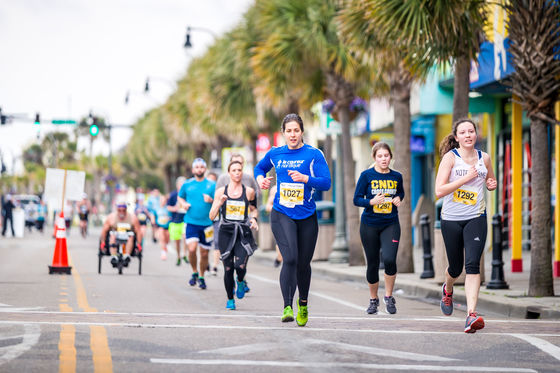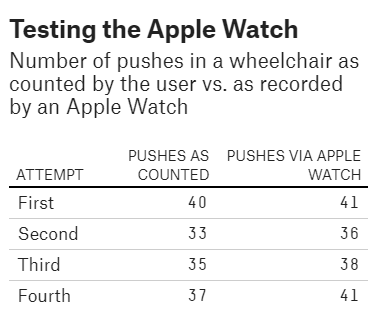Claims that smart watches will be able to offer more for wheelchair users

With the advent of smartwatches and fitness trackers, it has become easier for many people to measure their daily activity, making exercise and small exercises more enjoyable. However, sports-related media
Smart Watches Could Do More For Wheelchair Users | FiveThirtyEight
https://fivethirtyeight.com/features/smart-watches-could-do-more-for-wheelchair-users/
WhyThirtyEight explains why wheelchair users are left behind from activity tracking on smartwatches and fitness trackers, 'we can't measure wheelchair movements as easily as stepping.' A 2014 study found that there was a 21% difference in activity between people with and without disabilities.
It is clear that a tool that allows wheelchair users to measure daily activity is also necessary for health, and in fact, in 2016 Apple Watch supported wheelchair user activity measurement, 'How many times did you push (how many times did you touch) per day?' In March 2017, Strava , an exercise tracking service with social network capabilities specializing in running and cycling, also began supporting wheelchairs. However, these do not perform as well as activity tracking for healthy people, FiveThirtyEight points out.

In 2017 researchers at San Diego State University went
Also, according to a study published by a research team in Finland and Australia in 2019, the error rate of push count measurement of Apple Watch is 13.5% on average. This is within the permissible range for 'individuals checking the number of pushes per day' and 'roughly measuring the number of pushes for the group', but such as 'used by health professionals as a health index' It is said that accurate push number measurement is inappropriate.
There is no smartwatch or health tracker that can measure actual activity 100% accurately, so 'poor activity measurement' may not seem like a big deal for most users. .. However, for athletes who belong to national teams, for example, the inability to accurately measure activity can be a big problem.
It is also important how the data measured by the smartwatch is treated. Because there is a possibility that researchers will use the measured data in research papers. Research papers published for wheelchair users will not help people with disabilities unless the data measured by smartwatches used in research etc. are accurate.

Professor William Miller of the University of British Columbia has announced a research project to verify the accuracy of the 'how many wheelchair users have pushed' information that can be measured with Apple Watch and PushTracker. 'Reliable and accurate technology has been shown to motivate users to actively encourage physical activity,' said Miller. 'Wheelchair users' activity levels are declining. Information about measurement accuracy is especially important for manual wheelchair users. '
FiveThirtyEight writer John Loeppky also said that he conducted an experiment to lay a carpet in the corridor and go back and forth regularly in order to actually verify how correct the push number measurement of Apple Watch is. A study published in 2019 revealed that Apple Watch tends to underestimate the number of pushes, but Loeppky actually researched it, but on the contrary it tends to overestimate the number of pushes It turned out that.
The following is a summary of verification results by Loeppky. The left is 'PUSH ES AS COUNTED (actual number of pushes)', the right is 'PUSHES VIA APPLE WATCH (number of pushes measured by Apple Watch)', and the number of pushes measured by Apple Watch is larger than the actual number of pushes. You can see that there are many.

Loeppky said of smartwatches and health trackers: 'While we cannot measure wheelchair user activity with complete accuracy, wheelchair users can still play an important role in improving their health. With a little more sophisticated functionality, apps and devices that measure activity will be as useful to wheelchair users as they are to healthy people.”
Related Posts:





